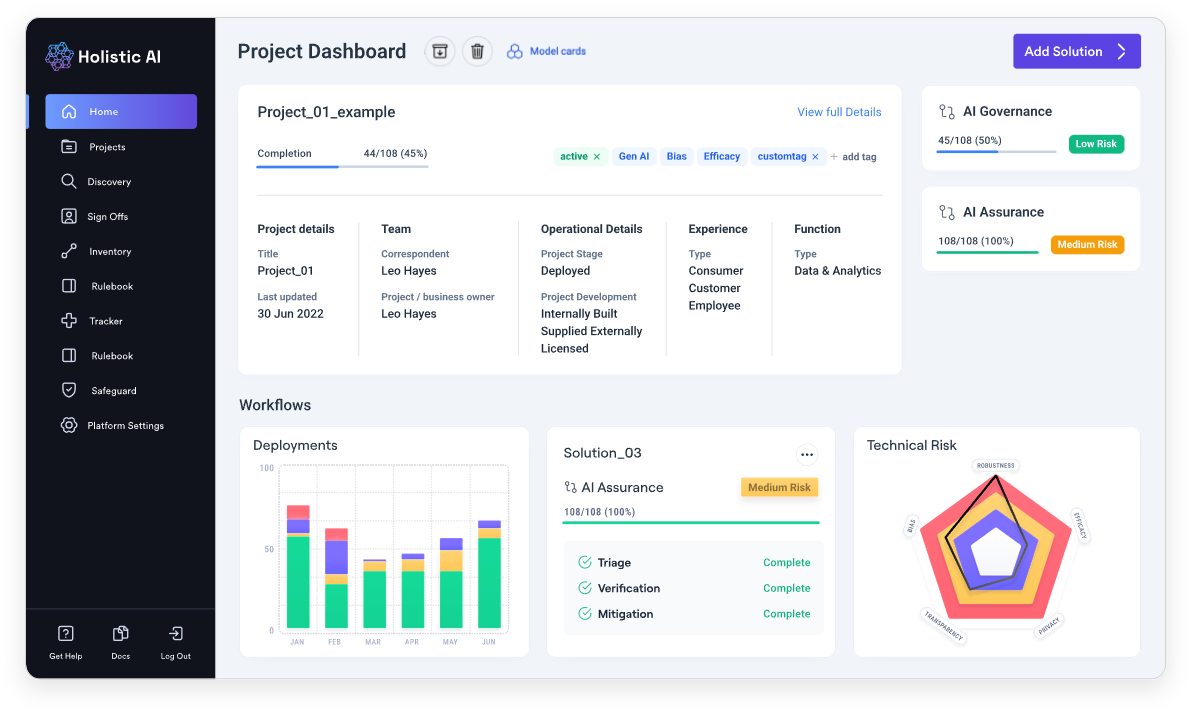
Holistic AI is an AI governance platform that helps organizations govern and scale AI responsibly, ensuring compliance, transparency, and performance across the full lifecycle.
Get started today
Get started today
Oversight from idea to deployment and beyond.
Built, bought, or embedded—govern it all.
Uncover shadow AI. Eliminate blind spots.
Validate robustness, performance, and integrity.
Quantify risks while aligning with policies and priorities.
Detect drift. Trigger alerts. Act instantly.
Thousands of models. One unified platform.
Built to match the speed and complexity of AI.






.svg)



.svg)
As AI adoption accelerates across functions and geographies, enterprises often lack a clear view of where and how AI is being used. Our Discovery & Inventory solution provides the visibility you need.
Maintain real-time, centralized oversight of every AI asset across your enterprise. Discover systems in codebases, third-party tools, SaaS platforms, and ad hoc team projects—including hidden or “shadow AI.”


Automated classification and risk scoring across Bias, Privacy, Efficacy, Transparency, and Robustness enable you to meet governance requirements and proactively mitigate risk.
Holistic AI governance empowers your organization to align decisions with actual AI usage—ensuring informed investments and accountability across all business units.



Get a demo
Get a demo